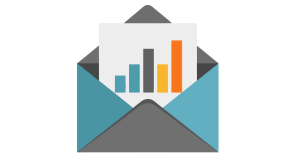2020 has been a year for email marketing to shine. With so much inconsistency around traditional marketing channels, email send volume has increased exponentially this year. At emfluence, we’ve seen a remarkable 177% increase in the number of emails people are sending this year over last—which means more competition for that email open in your recipients’ inbox.
If you’re looking for ways to uplevel your email marketing, evaluating your copy is a great (and easy) place to start. Here are 5 of our quick tips for crafting email copy that converts:
1. Is Your Email Adding Value to Your Recipient’s Inbox?
The best way to improve your email copywriting game is to first identify whether or not the email you’re about to send actually adds value to the recipient’s inbox. Generally speaking, people subscribe to emails for one of three reasons:
- They want an offer or a discount
- They want an education on a specific topic
- They want information on what they’ve already bought OR might buy
This means no sending emails just because your sales team wants you to! As you plan your sends for next year, think about which category each email fits into and ensure your call-to-action fits that category. Remember, too, that we’re talking about value to your recipient, not to your company. If it is not immediately clear what value your recipient will get from this email, then the email probably does more to serve your company than it does your recipient—and that’s a fast track to the unsubscribe button.
Sometimes that value means communicating timely information and setting expectations. For example, as this year’s online holiday shopping has created a bit of a “shipmaggedon,” marketers are advised to set expectations in both promotional emails and order confirmation emails to ensure holiday shoppers are aware of potential delays in shipping. See how Christopher Elbow encourages shoppers to buy early to avoid delays:
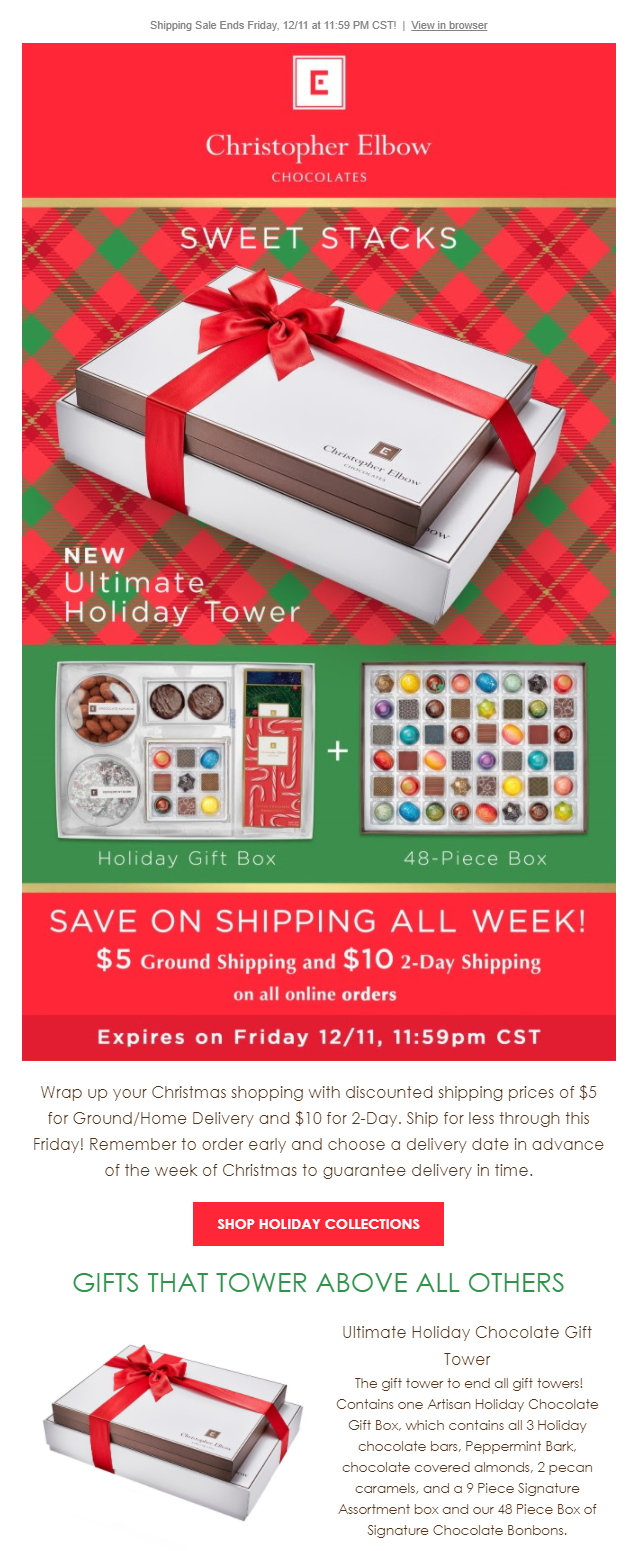
2. How Much Data Do You Have to Personalize?
A good email is one that uses data to create a personalized, meaningful experience for the recipient, and one way to do that is to use data to demonstrate that each email is 100% personalized to the individual receiving the email. Personalization could mean personalizing for interest, timeline, or any number of custom data points big and small. In most cases, you have a first name variable—that’s a good start!
Zulily personalizes emails based on browsing history, for example, to make it easier to navigate the enormity of their product catalog:
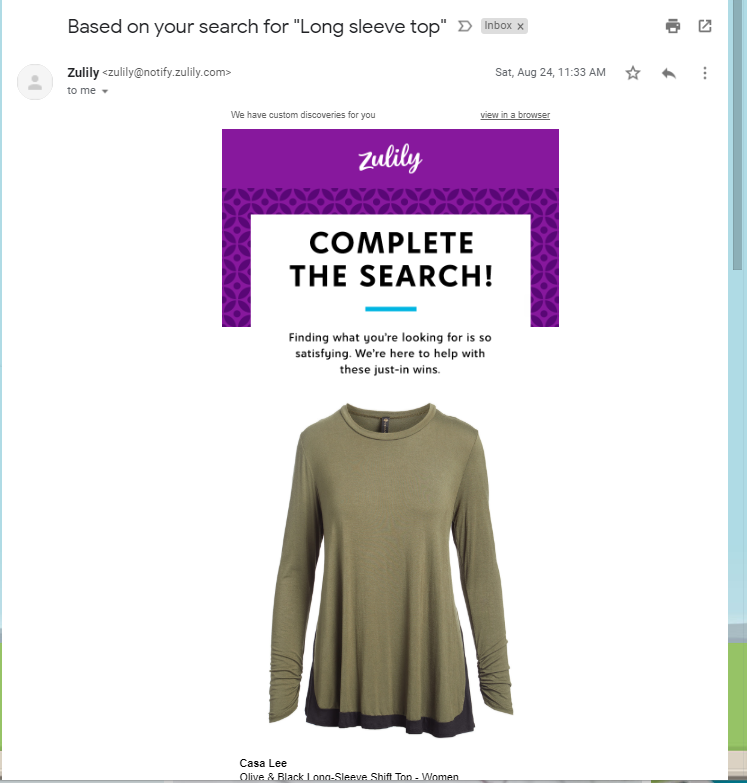
While Starbucks simply wanted to remind you (gently, of course) that you have money to spend in your mobile app:
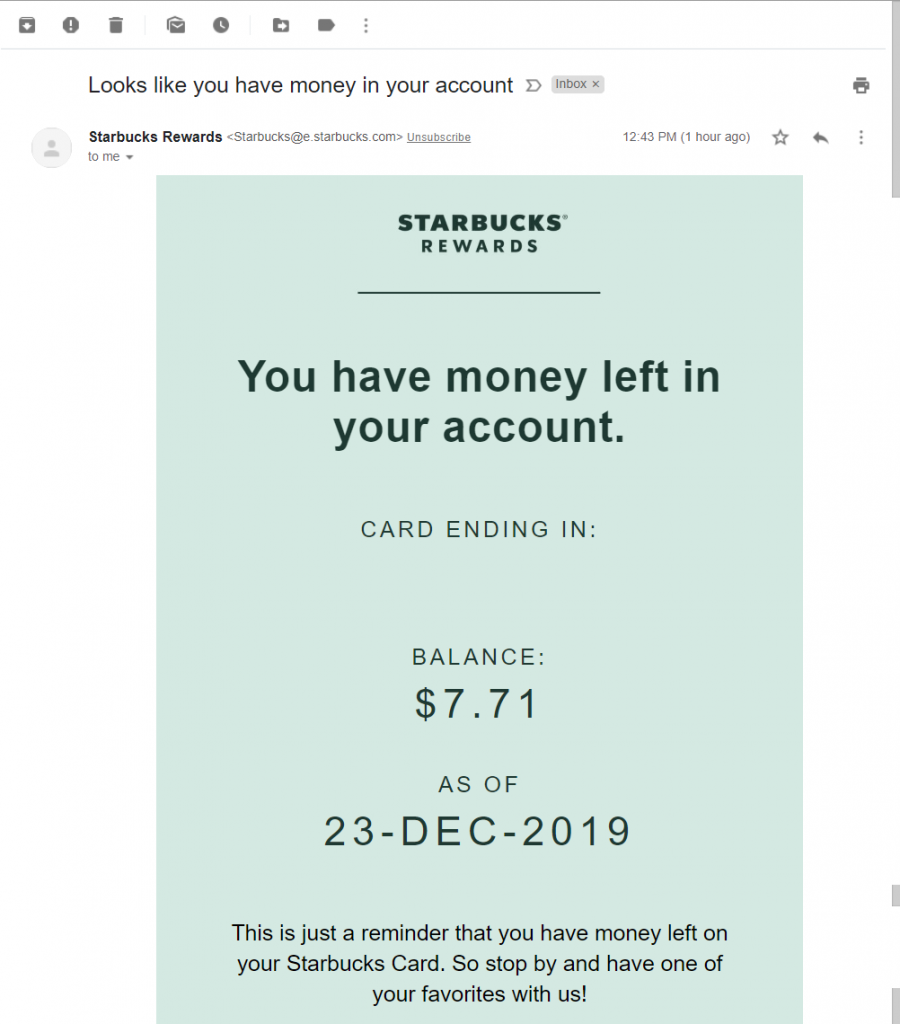
Or you could go big and showcase the unique value your customers or subscribers get from your product with a milestone email, like Duolingo does here:

3. Does the Voice Match the Segment?
Personas are a hot topic for marketing departments these days, and there’s a good chance you already have brand-specific persona sheets on hand. When translating these to email copy, you’ll want to be sure your tone and voice are appropriate for the persona. For example, your follow-up request to leave a review after a support ticket probably won’t be playful—whereas your email on behalf of your sales person will probably be conversational in a way that your marketing messages won’t be.
Similarly, you’ll want different calls to action depending on where someone is in the customer journey. At a minimum, you’ll probably have a CTA for people who haven’t bought but are interested, people who have almost bought (in B2B, they had a meeting, in B2C, they added to cart), or people who have already purchased. Even if the link you’re sending them to is exactly the same, how you phrase the call to action can help the email feel personalized to their buyer journey.
4. How’s Your First Touch?
Did you know that 64% of subscribers open an email based on who it’s from, compared to 47% of subscribers who open emails based on the subject line? Or that 68% of email recipients report email as spam based solely on the subject line?
Your subject line, preheader, and from address are the first points of contact you have with a recipient’s inbox, and these require special copywriting attention. First, consider the length of your subject lines and headers. The average subject line length is between 40 and 50 characters, with the recommendation being no more than 65 characters (to avoid clipping at odd and sometimes inappropriate places). For preheader, get the important stuff in the first 35 characters. Gmail allows for 100 to 110 characters, whereas iPhone allows for 35 characters.
What about capitalization? This should match your tone, persona, and style guide. Most brands leverage sentence-case capitalization:

Enticing copy in the subject line generally comes in the following forms:
- Personalization
- Copy that clearly identifies the value of the email
- Questions
- Numbers
- Intrigue
Be sure that you avoid things like “tricky” from addresses (which can damage your relationship with your recipient), fake previous email exchanges (e.g., RE: or FWD: ), false sense of urgency, referencing transactions that haven’t happened, or too many irrelevant emojis.
5. Embrace the Scroll or Keep Things Short?
The average number of words in an email is around 435, but the range you’ll see in the wild? That often depends on the type of email you’re sending. In general, the average attention span for an email is between 300 and 500 words—for a promotional email, you’ll want to go short and lean heavy into the call-to-action (shorter text means the CTA is more likely to be above the fold).
One of the cool things about newsletters or informational content, however, is that your reader is ready and willing to embrace the scroll. See a few examples of how long you can go if your primary purpose is to educate versus sell:
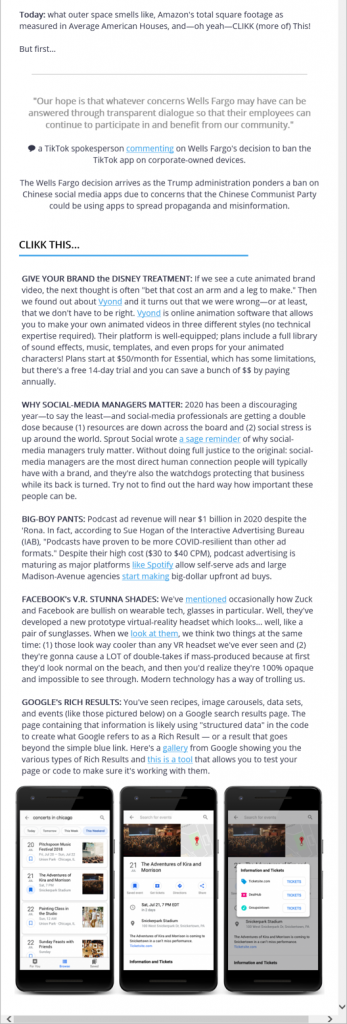
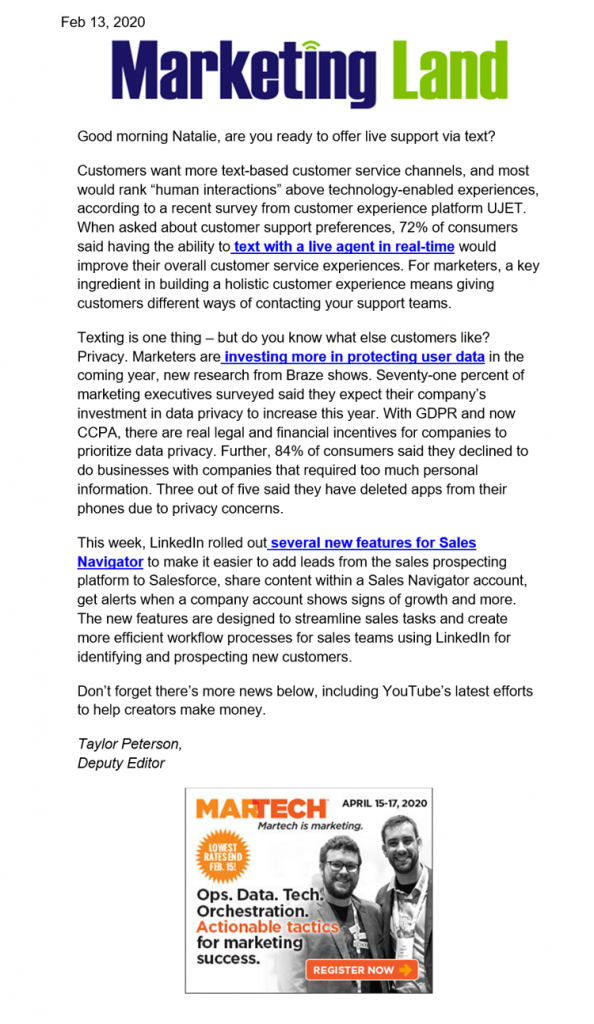
What’s Next?
A/B test, then test again, and then test some more. General recommendations are great, but testing gives you a way to get to know your unique audience. Learn how to run automated A/B tests with the emfluence Marketing Platform here, and let us know how your campaigns go with your new copy!
